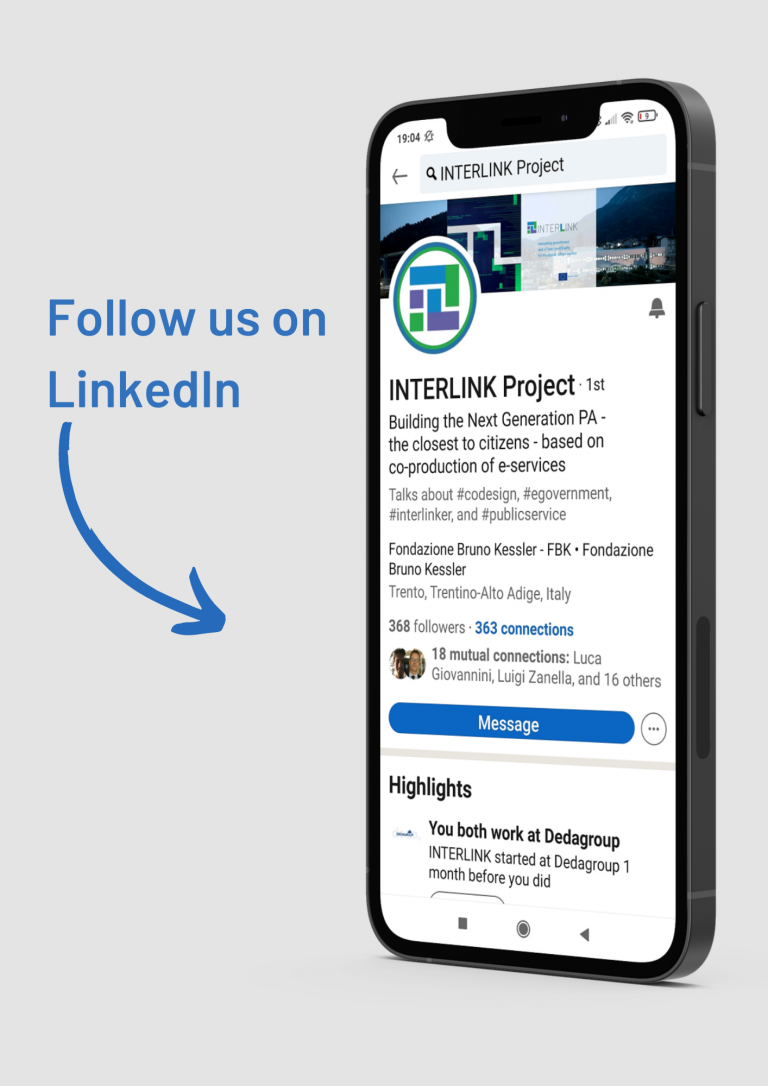Public Administrations are under continuous pressure to perform more efficiently and deliver faster and cheaper services to meet citizens’ and businesses’ needs. For this reason, governance is undergoing a deep transformation by developing new approaches for delivering public services, often along with two main directions.
Top-down and bottom-up approaches
- On the one hand, the European Commission with its Digital Single Market Strategy is leading this transformation which recognises that digital technologies have great potential to help PAs deliver better services for less. Much effort has been spent in developing regulations and procedures for the interoperability and re-use of software to enable the EU Digital single market. In particular, the eGovernment Action Plan 2016-2020 pushes for a migration towards European Digital Public Services co-delivered across borders. This migration requires the direct involvement of Member states that need to address several challenges on organizational, technological and regulatory aspects. While some PAs and governments across the EU already promote the sharing and reuse of public services there is still ample room for improvement, as a number of barriers,- i.e. organizational, legal, technical and communicational, still need to be tackled. Furthermore, these “top-down” approaches often fail to involve important stakeholders such as citizens, companies and third sector organizations, thus creating outcomes that are technically sound but have a limited adoption because of lack of involvement of private actors, transparency and trust.
- On the other hand, we have many examples of successful “Do It Yourself Government” (Citizen to Citizen). In these cases, citizens help themselves and other citizens, and the government plays no active role in day-to-day activities but may provide a facilitating framework. Thanks to modern mobile communications, social media and online collaboration platforms, citizen communities are able to easily and effectively self-organize, make collective decisions without a centralized leadership or hierarchy. However, while these approaches produced some interesting outcomes, they suffer from several breaking limitations, in particular sustainability, accountability and legitimacy.
Interlink motivation: blending the two approaches
Interlink project will develop a solution incorporating the strengths of these two approaches will be able to overcome their individual limitations, namely lack of involvement of private actors, transparency and trust for “top-down” approaches and lack of sustainability, accountability and legitimacy for “bottom-up” initiatives. In particular, the ambition is to develop a new collaborative governance model that promotes the reuse and sharing of existing public services leveraging on the partnership between citizens, private actors and public administrations.
This new approach is defined as a Public-civic partnership among Government and Citizens (G+C) indicating that government and citizens (and other private actors) share equal power and responsibility. Each side brings its unique advantages to the table to collaboratively solve problems and create public value.
The services considered have two main characteristics:
- they are co-produced, meaning that private organizations and citizens are engaged and collaborate with public government not (only) in their design, but also in their delivery;
- while these services are not necessarily “digital services”, they rely on the use of digital technologies and mobile communications to support an efficient organization of the delivery and effective collaboration of all engaged actors.
This ambition is not new. Indeed, the need to involve citizens and private actors (including non-governmental and civil society organizations) in the whole administration process is an approach that has gained popularity, so much that partnership between citizens, private organizations, and public administrations is at the core of the European Digital Agenda.





